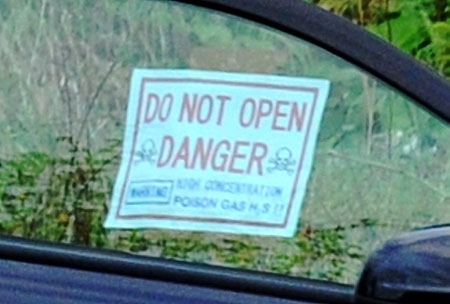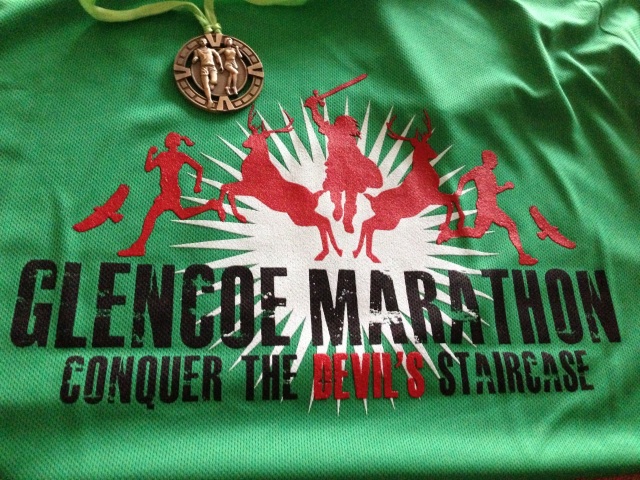This blog post is a critique of the article ‘The Scottish state and the criminalisation of football fans’ Lavalette and Mooney, 2013, in Criminal Justice Matters.
Before starting this critique I will explicitly state my position because I believe that, as a researcher, my position is intrinsically linked to my analysis. As most readers will know, I am a Sergeant in Police Scotland and trained as a public order tactical advisor. My skills and current role in events planning mean I am heavily involved in the policing of football.
I will argue that the article creates a Foucaltian power narrative, casting the club, police and state as the power hegemony and the Green Brigade as an ideal type, representing the oppressed working class, using counter power to push back against the hegemony.
The ideal type of repressed working class is constructed and developed through the article. Initially it introduces the notion of the “‘uncontrolled’ working class” (Lavalette et al, 2013) before introducing ‘Ultras’ and the Green Brigade. In an article entitled ‘The Scottish state and the criminalisation of football fans’ the authors move quickly from working class supporters, through Ultras to focus entirely on the Green Brigade as interchangeable with working class football fans
‘The problematic relationship they (The Green Brigade) have with Celtic Football Club is reflective of the broader contradictions of fandom.’ (Lavalette et al, 2013)
The Green Brigade are a reaction to corporate football ‘bringing colour and song to…games’ but also portrayed as socially responsible, against racism, fascism, sectarianism. The political stance of the Green Brigade is given as the reason for their oppression
‘what has undoubtedly provoked the ire of the Scottish Police and the Scottish Government is the GB’s (Green Brigade) self defined socialist republicanism’ (Lavalette et al, 2013)
The power hegemony of clubs, police, state is built by identifying abuses of power and the use of phrases like ‘swarming’ ‘kettled’ and ‘police state.’ (Lavalette et al, 2013). The three are used interchangeably. References to ground safety become a narrative of oppression; when fans challenge safety regulations, they are threatened with sanctions, no detail is provided to explain either party’s argument, the hegemony simply bully the oppressed.
The Green Brigade complain
‘about their treatment from the club and, more importantly, by Strathclyde Police. Several members…were arrested at home. Others picked up enroute to matches…Members were served with match bans (often without prior knowledge) or travelling bans’ (Lavalette et al, 2013)
These sentences link the actions of the club, police and state creating the hegemony of the three; but are crying out to be unpicked.
Why were prope arrested? The article doesn’t try to answer this, but discursively creates the link between membership of the green brigade and the arrests.
Who issued match and travel bans and why? The implication is the police, however, they have no power to do so; Football Banning Orders are issued by courts either after conviction for a criminal offence or application by the police. They can only be issued if a Sheriff believes that the person involved engages in violence and disorder and the imposition of a ban would help to prevent this (Scottish Government 2011). Banning someone from traveling is harder, Football Banning Orders have a condition that passports must be surrendered to prevent travel to foreign fixtures and may contain an additional condition preventing travel to towns where the club is playing (Scottish Government, 2011). Someone issued a Football Banning Order must register with the police within 5 days of the order being issued (Police, Public Order and Criminal Justice (Scotland) Act 2006, Section 53(2)) so ‘without prior knowledge’ is wrong if it is the Police/State that issued the ban. Clubs can ban fans from their own stadia and often control the sale of tickets to away fixtures, but cannot issue travel bans.
The article details other hegemonic abuse of power, arguing that the Green Brigade have been targeted because their
‘offensive banners, singing songs that are sectarian (loosely defined to capture any songs supportive of republican issues) or behaviour that is likely to cause offence. While there have been many arrests, so far the police have filed to get a significant conviction.’ (Lavalette et al, 2013)
The article states
‘The GB (Green Brigade) rarely sing pro-IRA songs. However, in their repertoire are a number of songs commemorating the Irish Hunger Strikers … It is these songs that have been used to target the group under the Offensive Behaviour at Football legislation’ (Lavalette et al, 2013)
The Campaign Archive on the INternet (CAIN) (http://cain.ulst.ac.uk/index.html) argues that the Hunger Strike was started by the leader of the IRA within the Maze Prison (CAIN Web Service) and I suggest that it is overly simplistic to separate the two as the authors have done_.
The phrase ‘significant conviction’ is very subjective, but the rulings in the case of Cairns (PF Dingwall v Joseph Anthony Cairns) and Moore (Ogston, 2013) are both in my view significant and both accept that the songs are sectarian and/or relate to the IRA. I do accept that both these judgements came after the article was submitted for review and publication. There is a counter finding, also from Dundee Sheriff Court, cf the case of Dion McLeish (BBC, 2013), which found that the Crown had not demonstrated the link between the song and proscribed terrorist organisations, however this is currently subject of a Crown Appeal.
The authors are dismissive of the press when their position is contradicted, (‘despite Scottish media reports to the contrary, the GB (Green Brigade) rarely sing pro-IRA songs’ (Lavalette et al, 2013)) but when the press report hegemonic harassment it is considered evidential and quoted (‘The policing was considered so extreme…it led to a number of well publicised critical comments from … sections of the media’ (Lavalette et al, 2013)).
The power narrative constructed by the authors is overly simplistic, allowing only two actors, a football crowd is composed of opposing supporters. A review of crowd psychology is out with the scope of this article, but I think it is fair to say that the actions of one set of supporters impacts upon the actions and behaviour of the other set. As the 2003 ACPO Manual of Guidance for Keeping the Peace states
‘a trigger incident may be as a result of actions by crowd participants, by the police or as a result of altered perceptions arising from the interactions between them’ (my emphasis) ACPO 2003
The authors identify actions of the Green Brigade which they present as political statements and actions of counter power, for example the songs discussed above and banner protests against poppies, but don’t consider the wider issues that these actions have on the dynamics of the crowd. Excluding the reaction of the other party builds the narrative of oppression and abuse of power.
The article concludes by reaffirming the link between the Green Brigade and the working class and also locating them in the power struggle with the state. This is where the power narrative is clearly detailed and the power abuses of the state in suppressing/oppressing the working class clearly stated. The authors link the power abuses of the Scottish state against the Green Brigade with abuses against the working class.
The article constructs an overly simple, two dimensional power narrative, of the innocent oppressed and the oppressive state. It fails to consider the negative aspects of the oppressed’s behaviour or analysis the reasons for the states position and it fails to consider the other players in the power narrative, such as opposing fans and those unconnected with football.
References
Association of Chief Police Officers (2003) Manual of Guidance for Keeping the Peace, London, ACPO
BBC, (2013) ‘Crown considers appealing Celtic fan’s not guilty verdict over Dundee disorder charge,’ http://www.bbc.co.uk accessed on 10th November 2013
Conflict Archive on the Internet, http://cain.ulst.ac.uk, accessed 10th November 2013
High Court of Justiciary (2013) Procurator Fiscal, Dingwall against Joseph Anthony Cairns, Edinburgh downloaded from http://www.scotcourts.gov.uk/opinions/2013HCJAC73.html
Lavalette, Michael and Mooney, Gerry (2013) ’The Scottish state and the criminalisation of football fans,’ Criminal Justice Matters, No. 93, pp. 22-4
Ogston, Graeme, (2013), ‘Celtic fan banned for sectarian singing at Tannadice’ Dundee Courier, September 19
Scottish Government (2006), Police, Public Order and Criminal Justice (Scotland) Act 2006, Edinburgh, Scottish Government, downloaded from http://www.legislation.gov.uk/asp/2006/10/contents
Scottish Government (2011), An Evaluation of Football Banning Orders in Scotland’ Edinburgh, Scottish Government, downloaded from http://www.scotland.gov.uk/Resource/Doc/354566/0119713.pdf
Scottish Government (2012), Offensive Behaviour at Football and Threatening Communications (Scotland) Act 2012, Edinburgh, Scottish Government, downloaded from http://www.legislation.gov.uk/asp/2012/1/section/1/enacted




